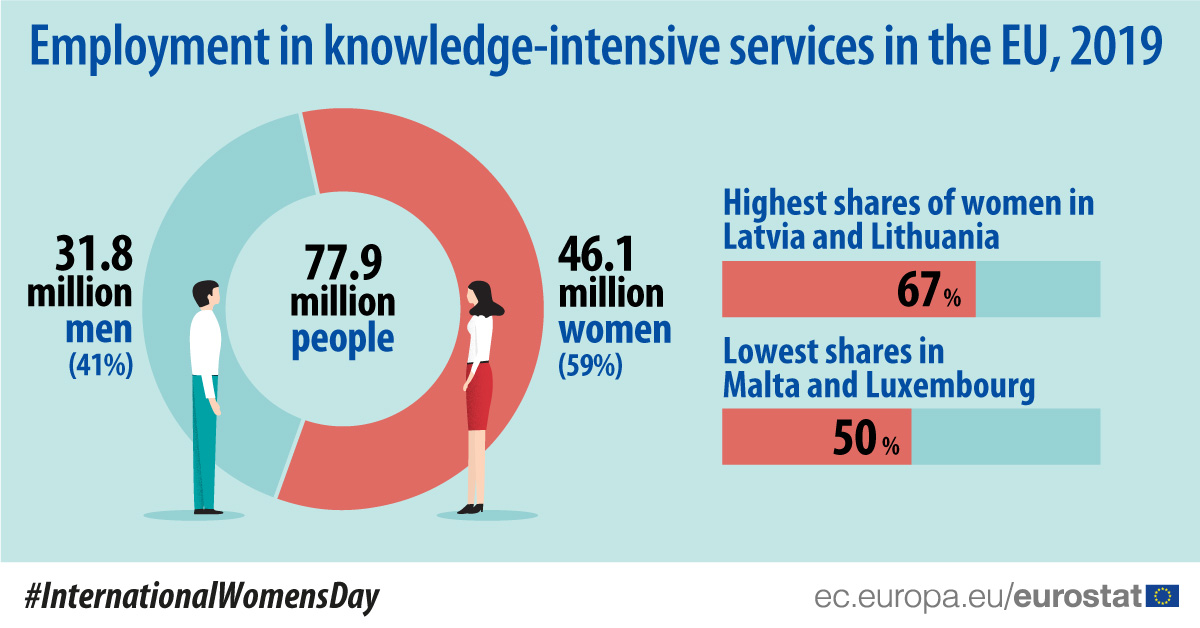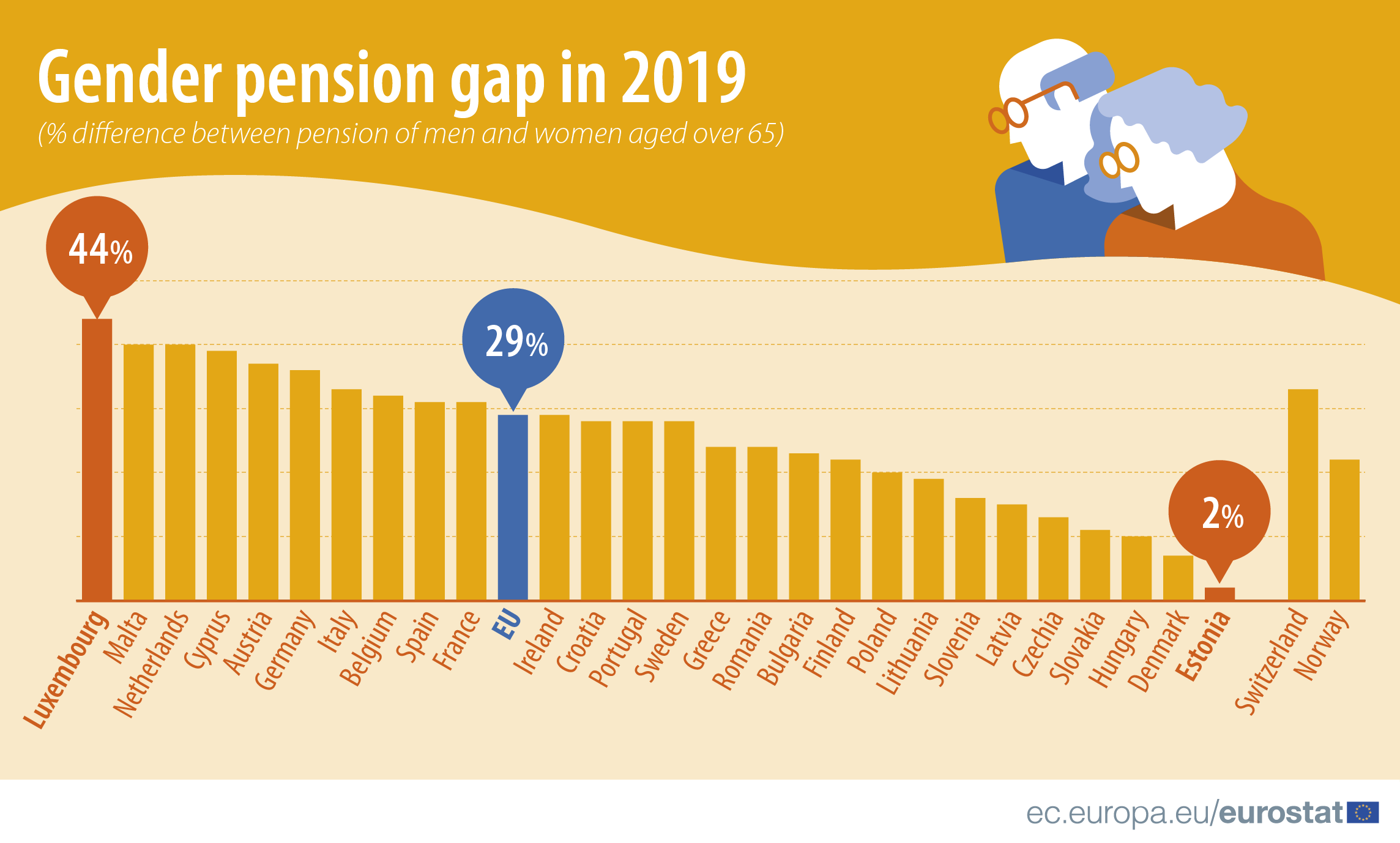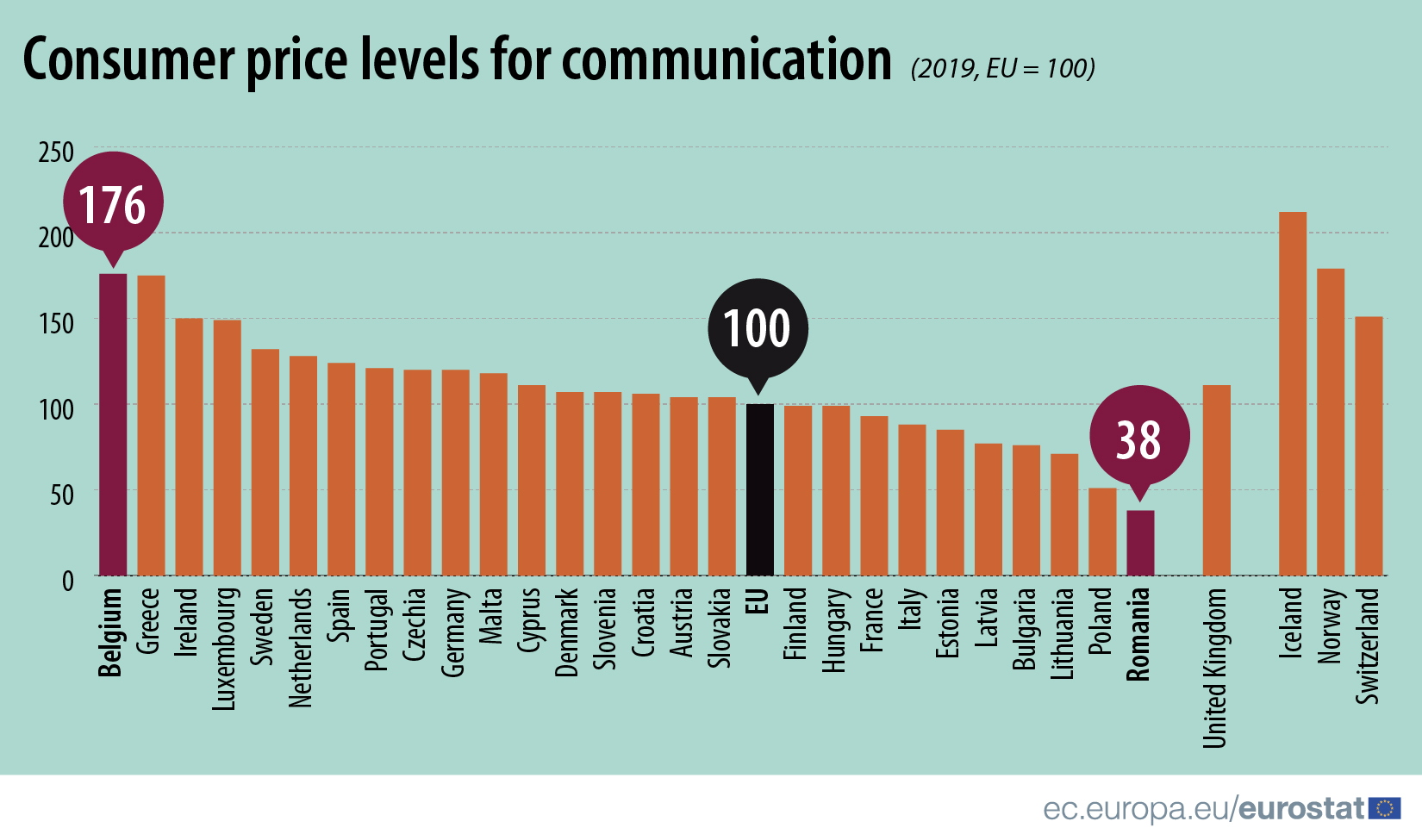Statistics
Women held 33% of seats in national parliaments in the EU in 2020. This share has been rising since 2004, when women accounted for around one-fifth (21%) of members in national parliaments.
In 2019, 77.9 million people in the EU were employed in knowledge-intensive services, of whom 31.8 million were men and 46.1 million were women.
The mean age of women in the EU on giving birth to their first child is gradually increasing and stood at 29.4 years in 2019.
Online shopping is continuing to grow in the European Union (EU).
In 2019, women in the EU aged over 65 received a pension that was on average 29% lower than that of men.
On average in the EU, public and private expenditure on preventive care accounted for 2.8% of total health expenditure in 2018, with highest shares recorded in Italy (4.4%) and Finland (4.0%).
In 2019, environmental tax revenue in the European Union (EU) amounted to €330.6 billion, corresponding to 2.4% of GDP.
In 2019, communication prices across the European Union were almost five times as high in the most expensive EU Member State than in the cheapest one.









